#arthur tudor
Text




henry and elizabeth ( + baby arthur 🫶🏻)
#perioddramaedit#weloveperioddrama#the white princess#jodie comer#elizabeth of york#jacob collins levy#henry vii#arthur tudor#twpedit#jodiecomeredit#perioddramaonly#userladiesofcinema#userladiesblr#cinemapix#perioddramasonly#tvgifs#perioddramagif#gifshistorical#pdedit#nessa007#userfefa#otp: the welsh dragon and the english rose#costumegif#15th century#cinepix#dailytudors#tudorerasource#cinematv#*gifs#*gifset
264 notes
·
View notes
Text
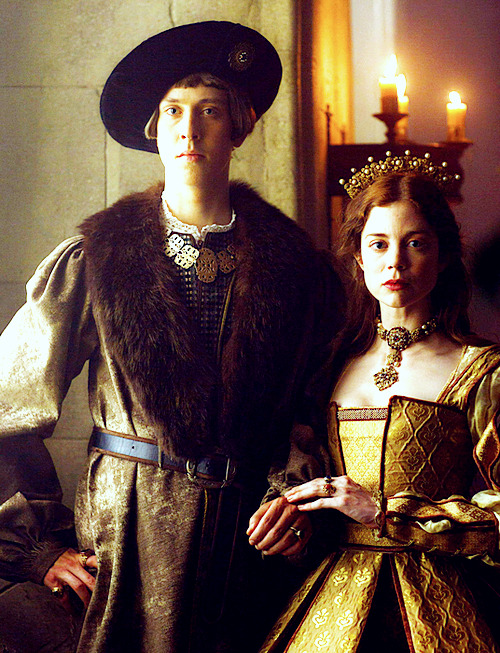
Angus Imrie and Charlotte Hope as Arthur, Prince of Wales with Katherine, Princess of Aragon, Castile, and Wales
[Starz The Spanish Princess Part One Promotional Material]
#the spanish princess#thespanishprincessedit#perioddramaedit#angus imrie#charlotte hope#arthur tudor#katherine of aragon#my edits
102 notes
·
View notes
Photo

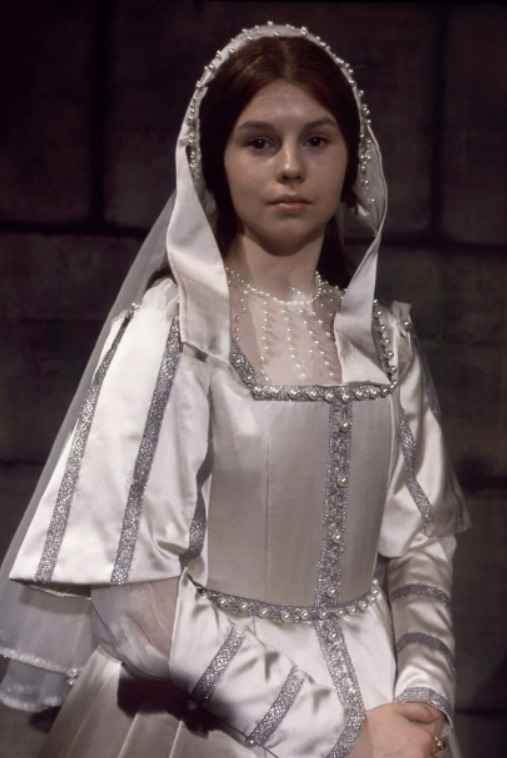
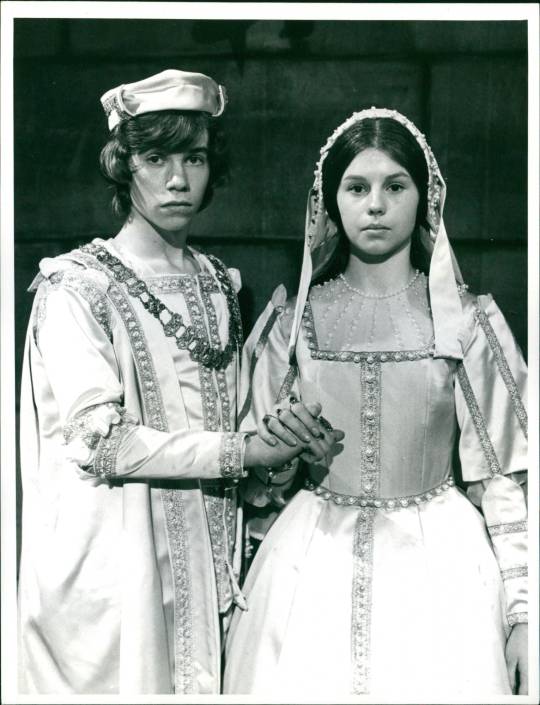
Adrienne Byrne as Catherine of Aragon and Jason Kemp as Prince Arthur in The Shadow of the Tower (1972), Episode 13: The King Without a Face
edited by me; apologies for any remaining artifacts!
#tudor era#catherine of aragon#adrienne byrne#arthur tudor#jason kemp#god they rly were so young when they got married#they were both 15#and this depiction rly shows that#barely teenagers#ngl this depiction is my mental image of both Arthur and a young CoA#the shadow of the tower
332 notes
·
View notes
Note
Hi! You think arthur wasn't premature? Do you think he was planned ?
Hi! Sorry for taking so long to reply! Honestly, I'm unsure whether Arthur was carried to term or genuinely premature. I've been meaning to make a poll about it because imo this is such an interesting speculation. The arguments in favour and against Arthur being premature would be, in general lines:
Arguments in favour:
Elizabeth of York seems to have been sick during her pregnancy. Preparations had been made for her arrival at York for the king's northern progress but she did not go. After her labour, she definitely became sick (she had an 'ague', as the herald recorded). Hyperemesis gravidarum could explain Elizabeth's sickness and possible preterm delivery.
The Earl of Oxford, one of Arthur's godparents, arrived late for Arthur's christening ceremony, delaying for a couple of days. If Arthur was born premature it could explain why Oxford had not made his way yet to Winchester by the time of his godchild's birth.
Henry VII was famously prudent, which was also talked about during his lifetime, and that might have hindered any premarital relations. He went to great lengths to have all the necessary marriage dispensations and to have his marriage formally recognised by parliament as a state necessity. Given the whole context of past accusations of illegitimacy against royal heirs, it would be out of character for him to risk having his heir born before they could get a papal dispensation and undergo a formal public wedding ceremony. Henry himself declared to the papal legate that 'he cannot fulfil such desire [marriage] without obtaining canonical dispensation'.
Arguments against:
Arthur was described as a 'fair prince and large of bones' at his birth. Being described as a big baby does not sound like someone who was born before his term. His parents waited a few days for his baptism thanks to Oxford's late arrival so they definitely thought him healthy enough to risk the possibility of him dying before getting him the sacrament. At that time, babies who died before baptism were considered unable to go to Heaven, and many hasty baptisms were performed by midwives soon after the child's delivery if their health was considered to be in danger. The herald who registered the proceedings of Arthur's birth and christening never once did mention that Arthur arrived early or that Elizabeth of York 'was delivered suddenly', like she was said to have the last time she gave birth (1503).
In medieval England, betrothals could be as binding as an actual marriage. Elizabeth of York was described as Henry VII's 'wife' since December 1485 and seems to have moved into the Palace of Westminster around that time, that is, they started cohabitating from then on. It's possible they became husband and wife in practical terms after a declaration of intention to marry followed by consummation (marriage per verba de praesenti).
Although Henry VII made sure to get all the necessary papal dispensations (3), the fact is that he did not wait for the arrival of all three dispensations and quickly married Elizabeth after the arrival of the first one — only two days later, in fact. Did they rush to get a public wedding because they had already been living as husband and wife? Did they do it because they feared Elizabeth could already have been pregnant at that time? Why couldn't they wait until March/April when the other dispensation, signed by the Pope himself this time, arrived?
The papal representative that gave them their first dispensation arrived in England in January. It's possible they already knew about his arrival back in December and knew that they could quickly get their first dispensation through him (they certainly did prepare for his audience), so cohabitating (and everything else it entailed) would not be as risky and imprudent of them as we might think nowadays. Alternatively, the papal legate might have already been in England by December but could only hold an audience in January once Advent/Christmastide was over.
Henry VII's prudence aside, they might have simply had the hots for each other. Thomas Stanley declared at the papal audience that he often heard Elizabeth and Henry talking together about their marriage ('often and at divers times treating and communing of and about a marriage to be contracted between them') and that Elizabeth had 'great and intimate love and cordial affection' for Henry. Stanley was the only witness to cite Elizabeth's love and affection when questioned, so it does not read as an argument line that was agreed upon between all the witnesses before the audience. Interestingly, in the ballad The Most Pleasant Song of the Lady Bessy, Thomas Stanley is portrayed as Elizabeth's trusted friend. Similarly, the Earl of Nottingham, who claimed to have known Henry for twenty years, was the only one to cite Henry's 'singular love which he bears to her'. The pregnancy calculator sets Arthur's full-term conception as 29 December-4 January, so could Arthur have been a Christmas/New Year's celebration baby, conceived during a time when court etiquette was particularly lax and the mood particularly festive?
This is all I can think now but there might be other arguments either in favour or against the theory. I've been meaning to read a new biography of Arthur Tudor recently published whose author seems to think Arthur truly was premature, so I'm curious to know why he thinks that. Of course, the theory that Arthur was premature does carry a certain weight. Every argument against it can be refuted, including for example, the idea that Arthur would have looked small on the day of his birth (20 September 1486) if he was conceived exactly on their parents' wedding night — he would only be a week short of his full time, then. If he was conceived later, though, he would have been even more premature. It's difficult to say.
109 notes
·
View notes
Photo

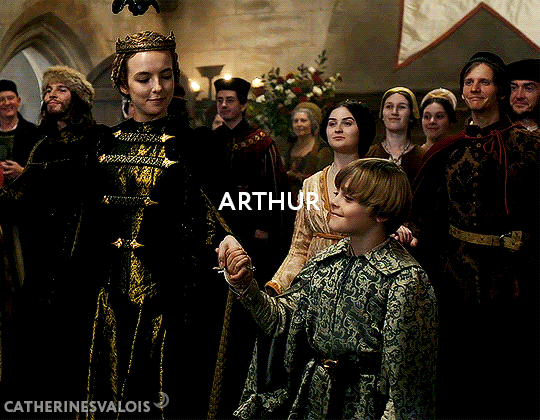


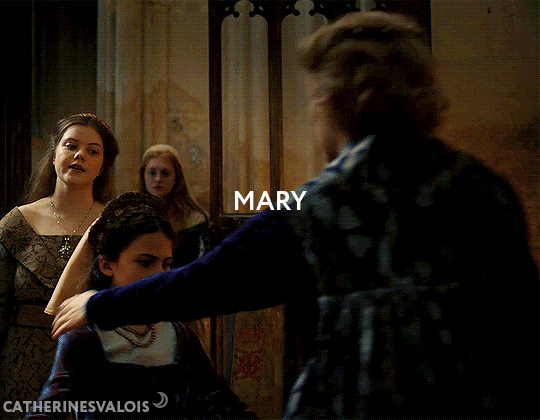
TUDOR WEEK 2022
DAY 2 FAVORITE TUDOR PARENT + CHILD RELATIONSHIP → ELIZABETH OF YORK + HENRY VII AND THEIR CHILDREN
#tudorweek2022#perioddramaedit#period drama#tudorerasource#tudoredit#elizabeth of york#henry vii#arthur tudor#henry tudor#margaret tudor#mary tudor#the spanish princess#the white princess#tvfilmsource#tvfilmedit#weloveperioddrama#periodedit#perioddramasource#onlyperioddramas#userperioddrama#userbennet#gifshistorical#gifs: mine
529 notes
·
View notes
Text
There is nothing in these copies to indicate or suggest that Arthur was sickly, infirm or anything other than a robust and quite tough teenager.
Prince Arthur: the Tudor King Who Never Was, Sean Cunningham
30 notes
·
View notes
Text

“I wonder what the world would be like today if Prince Arthur didn’t die and Henry VIII didn’t become King.” - Submitted by Anonymous
8 notes
·
View notes
Text
•Studying the demise of a prince: the death of Arthur Tudor, Prince of Wales.•
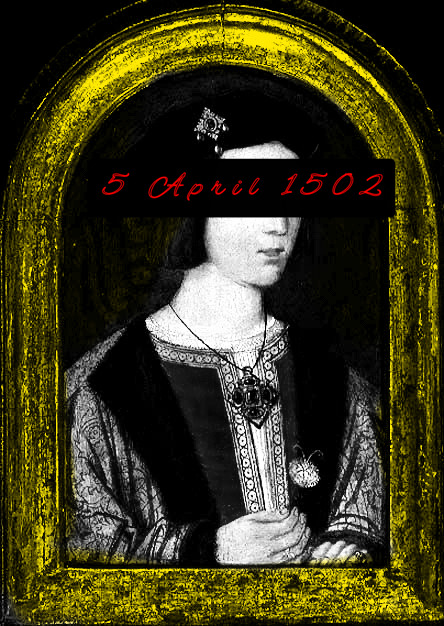

“Arthur's return to Ludlow as a married man with his wife beside him was a cause for celebration. Feasts, festivals and entertainments supplied plenty of scope for the renewal of old relationships and the building of new ones. The early spring of 1502 was surely one of the most joyous times of Arthur's life.
It was possibly a high-point for King Henry. He was drawing up plans to deal with his latest rebel, the Earl of Suffolk, but even worries about another Yorkist claimant might not yet have diminished the shine from the success of his alliance with Spain and the ceremonies that cemented it. Whatever spectacles unfolded are hidden from us by a lack of evidence, however, and the first indication that they had reached Ludlow was the notification of Arthur's illness and death at the start of April.
Detail about the cause of Arthur's decease is imprecise. This results partly from the vagueness of medical knowledge available at the time and the fact that the information comes from commentators on the social side of courtly life and not from within the medical circles that attended the prince when he became ill.
The author of the best source, the record of Princess Catherine's arrival, was not at Ludlow and had not had a chance to talk in detail to those that had seen the prince during his very rapid decline.
It is in the record of the king's reaction to the news of his son's death that we get a deeper sense that this record was written by an eyewitness. It does also supply impressive detail on how much Arthur was loved by his parents.
The prince died on Saturday 2 April 1502 at Ludlow, between six and seven o'clock in the evening. His chamberlain, Sir Richard Pole, assembled Arthur's council and drafted letters to the king and court, then at Greenwich Palace. (…)
Henry VII's councillors received the letters first and, armed with the dreadful news, sent for the king's confessor, an observant friars.
The councillors asked the confessor to give the news to the king, in expectation that he would need much personal and spiritual comforting. On the Tuesday following Arthur's death, 5 April, the king was awoken earlier than usual and the confessor asked everyone else to leave the chamber.
After introducing the most painful subject with the Latin phrase, 'If we have received good things by the hand of God, why should we not receive evil?’, he then broke the news that Arthur had died.
Henry immediately sent for the queen so that they ‘wold take the peynfull sorowes togyders’. The writer of the account must have been on hand within the household, since he heard Queen Elizabeth's words of support to her husband.
The arrival of an express rider from Ludlow would certainly have drawn attention as the household staff of Greenwich Palace rose as part of their daily routine of service to the king and queen.
Elizabeth was recorded as explaining how the realm remained safe in King Henry's hands and how although he had been an only child he was preferred by God into the estate that he now enjoyed.
Their other children, Prince Henry and princesses Margaret and Mary, were healthy and preserved by God, and both she and the king were young enough to have more children, if it were God's will that it should be so.
She then comforted the king and was thanked for her loving words. When she returned to her own chamber, however, she was overcome with emotion:
[the] natural and moderly remebraunce of that great losse smote hir so sorrowful in the hert that those that were abought her were fayn to send for the Kyng to compforte her.
The king then came ‘of true, gentil and feithfull love’ without being informed of his wife’s distress. It was his turn to offer words to alleviate her pain as they both struggled for enough composure to give thanks for their son’s life.
This evidence offers one of the few instances of everyday human emotion apparent in descriptions of the life of Henry VII and Queen Elizabeth. These powerful hints of heartfelt feelings and humanity in the personality of the king are important reminders of just how incomplete is the evidence used by modern scholars to judge personal characteristics.
The king is often identified as cold and remote, but this is to judge him on evidence of how he governed and defended his throne. Those type of records would seldom reveal anything substantial on the private nature of a monarch that lived over 500 years ago.
If we do see a little more warmth and concern in Henry's actions, then it is natural to think that some of those traits would have been passed on to his son - especially in the period of intensive contact that father and son experienced in October and November 1501.
Royal children were seldom brought up in close proximity to their parents, and were particularly remote from their fathers. For Henry and Elizabeth, the difficulty of sending their first child into the care of other people, miles from wherever they spent time, was surely one of the more harrowing decisions of their lives.
At the time that decision was made by Henry VII and his wife, the regime was continually beset by plotters and enemies intent on pulling Henry VII from the throne.
King Henry saw Arthur's departure as essential to the sustainability of his family's ongoing rule. By separating the king and his heir, Henry was following a recent tradition among English rulers.
In the circumstances of his accession, however, it was more of a risk since the loyal core of Tudor friends and allies was so small. The regime's opponents were already seeking to make traitors of those Yorkists that had lent Henry VII their military power and service since 1485.
(…) It is also unclear if the prince's household suffered many other deaths at that time. All of the chief officers in the prince’s service deatived this period of infection, but there is some suggestion that Princess Catherine was quite ill at the same time as her husband.
That would not be surprising if the disease that killed him was a form of the sweating sickness which would have been passed through close physical contact and the transmission of infection in bodily fluids. She certainly did not attend his funeral, although a chair had been prepared for her; but whether this was due to her own illness or court protocol is uncertain.
If Catherine shared some of her husband's symptoms when few others in the royal household did, then it suggests that she and her husband had spent considerable time in each other's company - to the point that their proximity contributed directly to a fatal illness striking down Arthur in 1502 when it might have spared him in previous years…”
Cunningham, S. “Prince Arthur: The Tudor King Who Never Was”.
#tudor dynasty#Arthur Tudor#Prince Arthur#Arthur Tudor Prince of Wales#Prince of Wales#House of Tudor#Henry VII#Elizabeth of York#early Tudors#historian: Sean Cunningham#certainly a more reliable historian than others that I’ve seen…
53 notes
·
View notes
Text



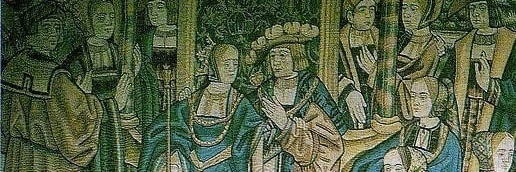



I’m never gonna meet what could’ve been, would’ve been, what should’ve been you…
Tudor Week Day 4: Favorite Male Tudor Family Member: Arthur Tudor, Prince of Wales
#tudorweek2023#dailytudors#tudor week 2023#daily Tudors#catherine of aragon#prince arthur#arthur tudor#arthur prince of wales#tudor history#the tudors#english history#tudor era#tudor england#taylor swift#bigger than the whole sky#tudor dynasty#tudor period#tudor portraits#tudors#sixteenth century#16th century#renaissance history#henry vii#henry vii of england#elizabeth of york#katherine of aragon#catalina de aragón#catalina de aragon#henry viii
25 notes
·
View notes
Text
I read a description of Arthur Tudor somewhere that described him as "a delicate lad" and now I'm just picturing him and Catherine of Aragon with a malewife x girlboss dynamic
11 notes
·
View notes
Text
PART 1: ARTHUR, KING OF ENGLAND

AU: All of Henry VII and Elizabeth of York’s children survive to adulthood. [Part 2 // 3 // 4 // 5 // 6 // 7] (requested by anonymous)
Read on AO3
#au#tudor au#henry vii#elizabeth of york#arthur tudor#catherine of aragon#katherine of aragon#request
15 notes
·
View notes
Text
Singing, dancing, and music surrounded this lady princess in her youth. She herself learned to dance, to play instruments, and to love the music of the 13 minstrels retained by Edward IV for entertaining at court festivals.
The minstrels' trumpets,shawms,small pipes, and strings added a professional component to her early musical education and became a vital, ever-present part of Elizabeth of York's life. As queen, Elizabeth retained her own minstrels quite separate from those of Henry VII⎯and rewarded them generously. Her own children played the lute, virginal, clavichord, and organ, while she herself played the clavichord (and perhaps other instruments). Her son Henry VIII became renowned for his singing, dancing, and composing.
⎺ Elizabeth of York (Queenship and Power), Arlene Okerlund
#historical notes#books#english history#elizabeth of york#edward iv#henry vii#arthur tudor#mary tudor#henry viii#margaret tudor#tudor history#the war of the roses#late medieval queens#going thru my readings for my paper so i thought i'd share some stuff ig#historical references#research
41 notes
·
View notes
Text


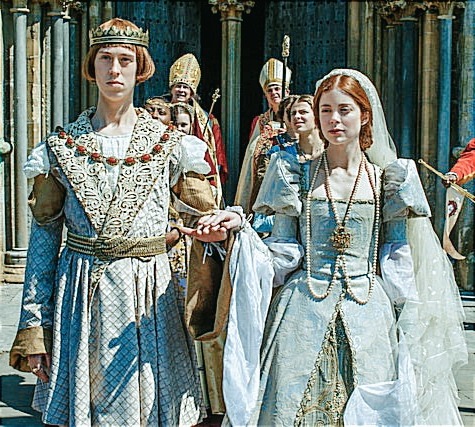
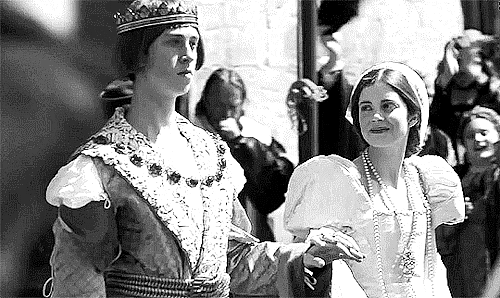
Catherine chose to be married in white. The colour would not become an established tradition for weddings until the Victorian period, so it is interesting that the princess selected it, with its associations of innocence and purity, over the costly brocades and gold that were favoured at her parents’ court. The symbolic message, the significance of the ceremony, appears to have overridden the opportunity to dazzle with colour and jewellery. She wore a long white satin skirt over her farthingale, pleated in folds, creating a hooped effect, and her face was covered by a white veil, edged in gold, embroidered with pearls, almost a prototype for what was to become a conventional bridal outfit. Her long hair hung loose as a further symbol of her virginity, as was traditional for a bride, and her long train was carried by the queen’s sister, Lady Cecily Welles. To some English eyes, the effect was rather masculine, concealing the female form, her dress being ‘very large, both [in] the sleeves and also the body with many pleats … much like men’s clothing’. It was perhaps coordinated that Arthur was also dressed in white satin, as was his brother Henry, who was to give away the bride. This conjured an unusual visual reference between husband, wife and brother that was prophetic of years to come.
Amy Licence, Catherine of Aragon: An Intimate Life of Henry VIII's True Wife
#catherine of aragon#katherine of aragon#catalina de aragon#arthur tudor#charlotte hope#the spanish princess
6 notes
·
View notes
Text
#katherine of aragon#arthur tudor#the poll to end all polls#go#I am really interested to see the results#polls
77 notes
·
View notes
Text
At the end of May [1487], [Elizabeth of York] departed Kenilworth and headed to Farnham. With her husband's throne facing its gravest threat, her separation from her child must have been overwhelming. But there was more than just maternal concern. Ahead of the queen's departure, a detachment of the royal household was sent ahead to Romsey Abbey, eight miles north of the Solent. Historian David Starkey notes that they were probably under instruction to 'prepare an escape route abroad for the queen and prince if things went badly' [...] The evidence suggests that in the event of the king's death, Elizabeth was to take Arthur to the continent and establish a court in exile. As an infant, Arthur could do nothing to help his father directly. Yet, for as long as there was breath in his body, the hope of the Tudors could live beyond Henry. The fact that the perilous task of preserving the Tudor dynasty was bestowed on the queen shows how much trust already existed between the royal couple. As the years went by, it would become clear just how effective a partnership they had forged. Elizabeth's role in the crisis of 1487 shows that the foundations of the king and queen's relationship were already established.
— Gareth Streeter, Arthur Prince of Wales: Henry VIII's Lost Brother
#elizabeth of york#historicwomendaily#overall i disagree with many things in this book#but it shone a light in traditionally overlooked aspects#of arthur's life#arthur tudor#henry vii#historian: gareth streeter
41 notes
·
View notes
Text

#tudor family#tudor dynasty#arthur prince of wales#arthur tudor#henry viii#edward vi#tudor confessions
66 notes
·
View notes